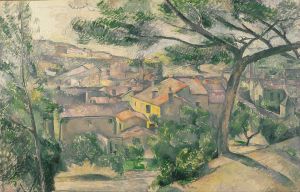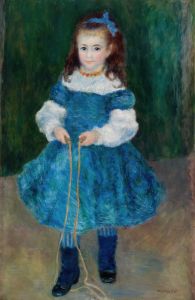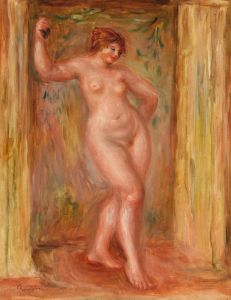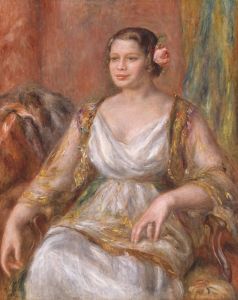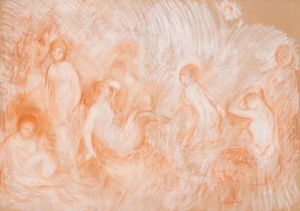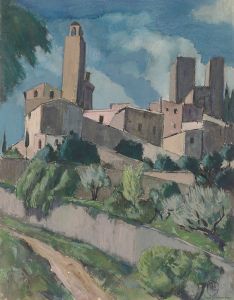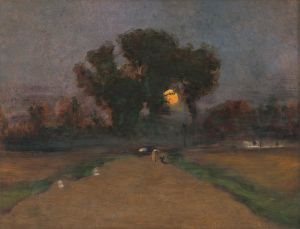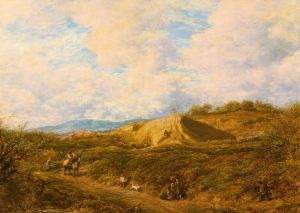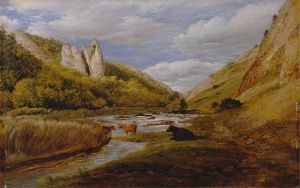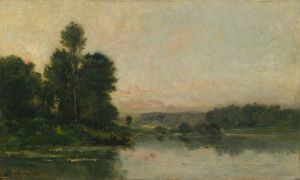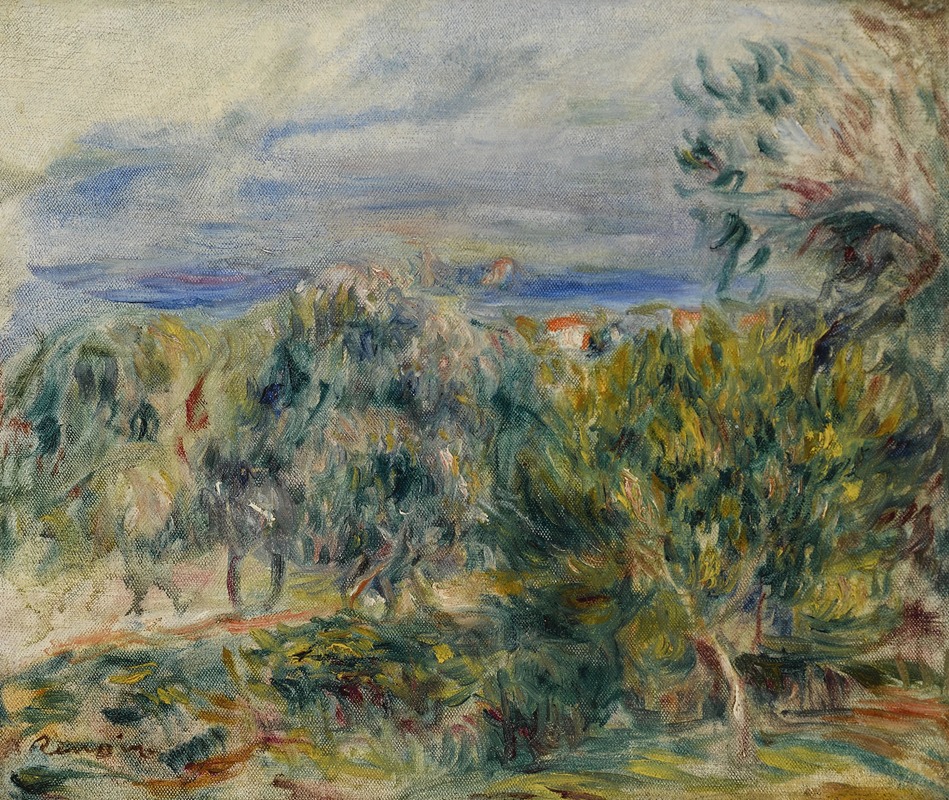
Paysage à Cagnes
A hand-painted replica of Pierre-Auguste Renoir’s masterpiece Paysage à Cagnes, meticulously crafted by professional artists to capture the true essence of the original. Each piece is created with museum-quality canvas and rare mineral pigments, carefully painted by experienced artists with delicate brushstrokes and rich, layered colors to perfectly recreate the texture of the original artwork. Unlike machine-printed reproductions, this hand-painted version brings the painting to life, infused with the artist’s emotions and skill in every stroke. Whether for personal collection or home decoration, it instantly elevates the artistic atmosphere of any space.
"Paysage à Cagnes" is a painting by the renowned French Impressionist artist Pierre-Auguste Renoir. Renoir, born on February 25, 1841, in Limoges, France, is celebrated for his vibrant light and saturated color, focusing on people in intimate and candid compositions. His work is a cornerstone of Impressionist art, a movement that sought to capture the momentary effects of light and atmosphere.
Renoir's "Paysage à Cagnes" is a landscape painting that reflects his mature style, characterized by a softer palette and a focus on the harmony of colors and forms. This painting was created during Renoir's later years when he lived in the south of France, particularly in Cagnes-sur-Mer, a small town near Nice. This period was marked by Renoir's exploration of the Mediterranean landscape, which greatly influenced his work.
The painting depicts the lush, rolling hills and the serene environment of Cagnes-sur-Mer. Renoir's choice of this locale was not only due to its picturesque scenery but also because the warmer climate was beneficial for his health, as he suffered from rheumatoid arthritis. Despite his physical challenges, Renoir continued to paint with great enthusiasm, adapting his techniques to accommodate his condition.
In "Paysage à Cagnes," Renoir employs a gentle, almost dreamlike quality to the landscape. The brushwork is loose and fluid, a hallmark of his Impressionist roots, yet it also shows a transition towards a more classical approach in his later years. The colors are warm and inviting, with a predominance of greens and blues that convey the tranquility of the southern French countryside. The composition is balanced and harmonious, reflecting Renoir's mastery in capturing the essence of a scene without overwhelming detail.
Renoir's landscapes from this period, including "Paysage à Cagnes," often emphasize the beauty of nature and the interplay of light and shadow. He was less concerned with the exact representation of the scene and more focused on evoking a sense of place and mood. This approach allows viewers to experience the painting on an emotional level, drawing them into the serene world Renoir so loved.
The significance of "Paysage à Cagnes" lies not only in its aesthetic appeal but also in its representation of Renoir's enduring passion for painting despite his physical limitations. It stands as a testament to his ability to adapt and continue creating art that resonates with viewers.
Renoir passed away on December 3, 1919, but his legacy endures through his extensive body of work, which continues to be celebrated worldwide. "Paysage à Cagnes" is a fine example of his later work, showcasing his continued evolution as an artist and his unwavering dedication to capturing the beauty of the world around him.





